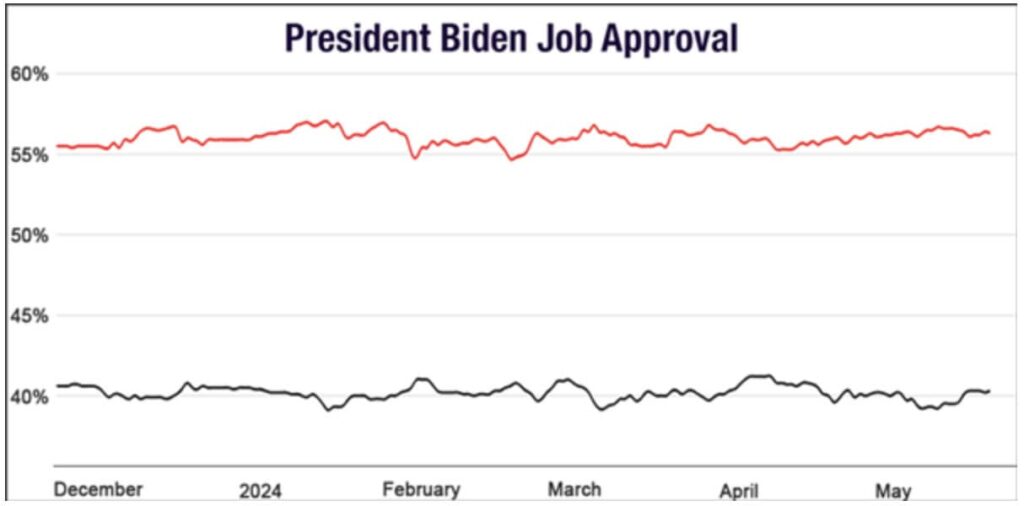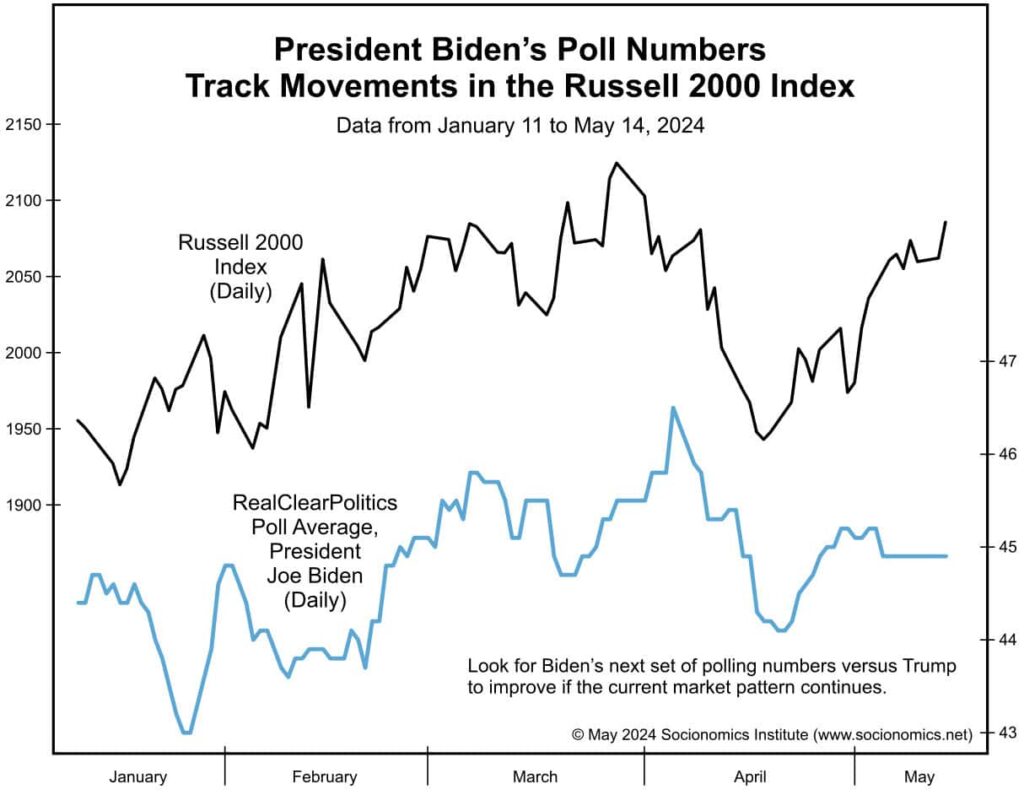Stock Market Social Mood And The Biden Trump Election
Social mood regulates voters’ perception of leaders. In most cases, the best measure of social mood is the direction of the stock market. So, what has the stock market been up to?

The three major U.S. stock indexes – the DJIA, S&P 500 and NASDAQ – topped in late 2021/early 2022. After trending mostly sideways for almost two years, last November all three turned up and went on to hit record highs this year.
But one other U.S. stock index did not. It’s the index that usually takes a back seat in most stock market conversations: the Russell 2000, an index of 2,000 small-cap U.S. stocks. The Russell peaked in late 2021, just like the other narrower indexes. But unlike the big three, it never reclaimed that high.
Bob Prechter’s February 2024 Elliott Wave Theorist noted that among all U.S. voters, approval of the president was only 44%. “But it is a whopping 84% among the wealthiest 1% of Americans,” EWT reported. “Social mood has been less positive among lower- and middle-income people, whose less optimistic outlook has been tracking the weak Russell 2000 index, resulting in the president’s overall low popularity ratings.”
As of May, the Russell 2000 (IWM) remains essentially flat (up ~3%) for the year.
And President Biden’s approval numbers are also essentially flat, stuck near 40% (black line; red line shows disapproval rating).

OK, not very exciting, after all, since flat is kinda, well, flat. But check this out. As we looked at the various polls on the RealClearPolitics (RCP) website, we noticed the striking resemblance between the Russell’s up-down-up performance since early this year and the blue line in the chart below. It represents President Biden’s percentage in RCP’s “General Election: Trump vs. Biden” polling data.

Why might they be similar? Well, we don’t have all the answers, yet we’re confident that our socionomic assessments in recent years have been better attuned to the public psyche, versus what mainstream polling techniques have offered. But it’s no coincidence that polling data of the incumbent president’s popularity is closely in synch with a stock market average that likely represents mass social mood in the United States. In fact, if the relationship continues, one might even look for a bump in Biden’s polling numbers vs. Trump in coming weeks.
Editor’s Update: The relationship has indeed continued according to this June 12 headline, “Joe Biden Retakes Lead From Donald Trump for First Time in a Month” (Newsweek, msn.com).
P.S. For a deeper dive into how social mood affects presidents’ odds of getting re-elected, see Chapter 2 (“Social Mood, Stock Market Performance, and U.S. Presidential Elections: A Socionomic Perspective on Voting Results”) in Robert Prechter’s Socionomic Causality in Politics.
It’s Better to Read Women’s Wear Daily than The Wall Street Journal
“Being a successful futurist requires recognizing that changes in social mood bring about changes in social actions as diverse as the arts, entertainment, the economy and politics.” — Robert Prechter, Socionomic Studies of Society and Culture, 2017
It’s true: By watching social trends and the markets, you can spot extremes in social mood – and, by extension, confirm key turning points.
So, you can stay ahead of the opportunities and the risks in politics, business, popular culture, epidemics, family, religion, industry and the financial markets
More By This Author:
GameStop AMC Meme Stocks Frenzy and the Winners LosersIs There A Recession In The US Economy This Year?
What To Make Of Record Bullish Market Bets
Disclosure: Financial Markets Risk Warning
U.S. Government Required Disclaimer - Commodity Futures Trading Commission Futures and Options trading has large potential rewards, but also large ...
more


